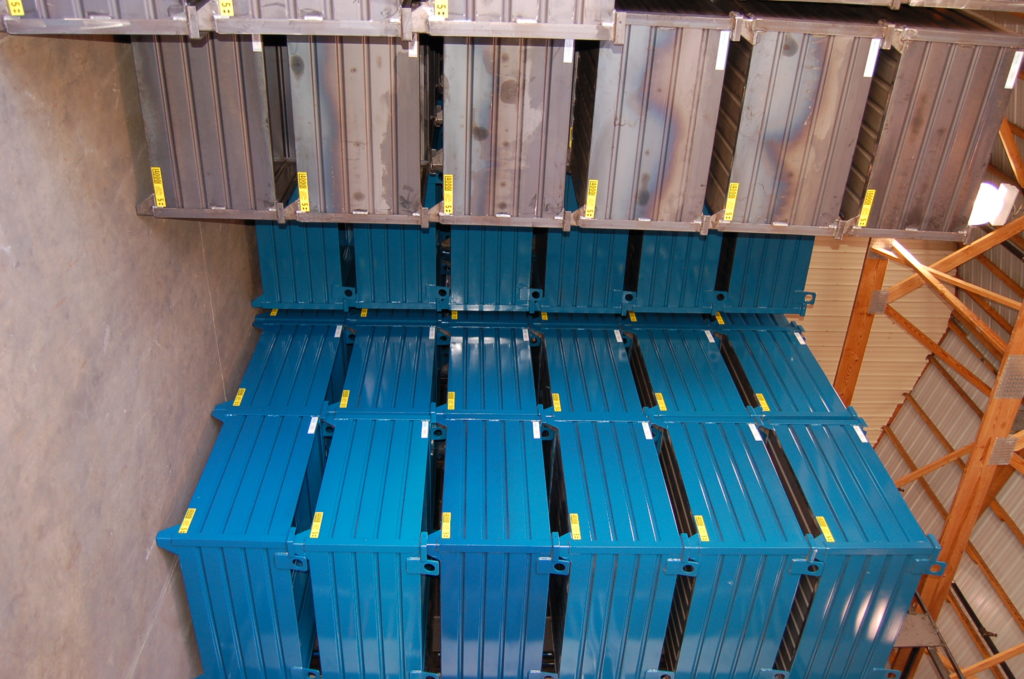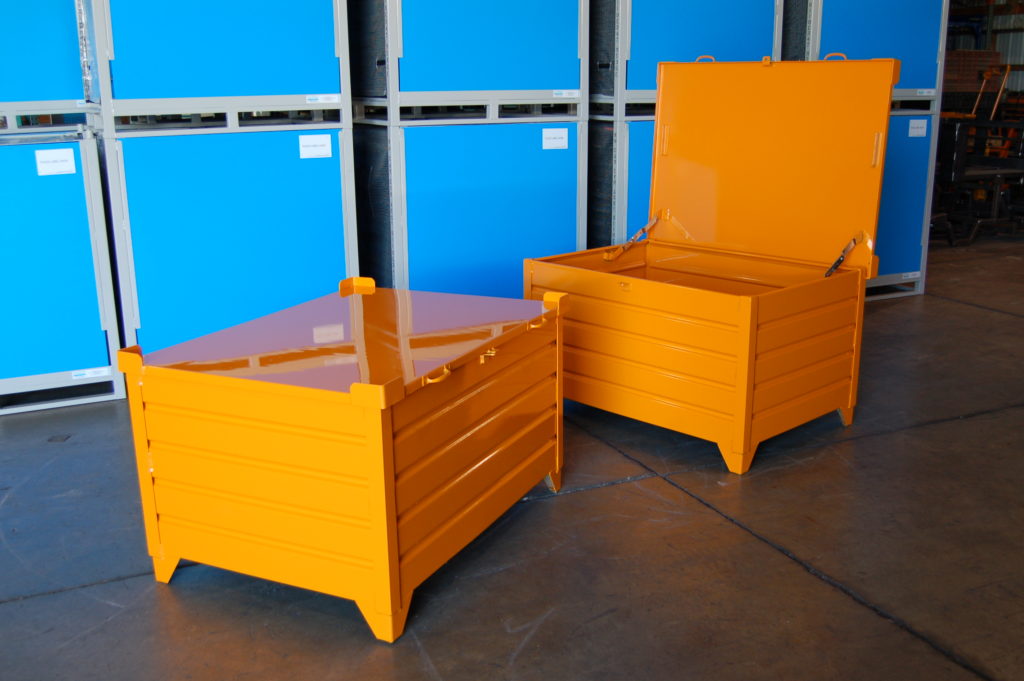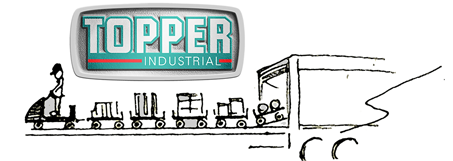
Originally published in Workplace Material Handling & Safety Magazine, May 2020 Issue.
As you can imagine, there is several ways to move, stack, carry, store and prep material when concluding to use the correct material handling equipment. This may seem a bit more simplistic than it is, but in general it takes a lot of consideration when creating the specific product material flow. Additionally, you are offered a lot of choices when it comes to equipment used to move material, store it and potentially assemble it.
Material Handling Equipment can be any apparatus that helps move, store, protect and even control material and the options seem limitless.
Categories of Material Handling Equipment
There are four generalized categories of material handling equipment. The first is bulk material handling. Bulk material handling is simply the material movement of bulk items. Generally, it refers to the transport of bulk goods before shipment or that of a specific sale. The next category of material handling equipment is any engineered systems. An engineered system is the incorporation of multiple components that work together as a system to perform an end function. An example of an engineered system could be an automated storage and retrieval system. It incorporates an automation system with a storage system. The third category of material handling equipment is industrial vehicles. Industrial vehicles are specialized motorized vehicles that carry, push or pull material and can utilize complimentary material handling equipment. In the world of material handling, examples of this are fork trucks, automated guide vehicles, lifts and specialized carts. The last material handling equipment category is storage/handling equipment. This category is any storage equipment that is used to hold or contain material while its being handled. Equipment like this includes, but is not limited to industrial carts, dollies, racks, shelving, mezzanines, and bins or containers.
The Container
One key component that is often overlooked for its virtue is the material handling container. This is simply because the use of containers spans throughout all spectrums of life and is so beneficial that we sometimes overlook how often we use it. Containers provide vast amounts of solutions from storage to inventory to organization and collection. Its virtue is in its vast construction and sizes.

Determining the Right Container for Material Handling
When companies purchase containers for material handling, they shop based on container type, size and availability. The size of the container depends on required holding capacity and the footprint of shop storage space. This is generally the starting point for many purchasing departments who receive specifications from their shop personnel for container use.

Plastic vs Steel Containers
In most work environments choosing the type of container is the most important aspect to negotiate. After acknowledging what the containers basic purpose will be, pros and cons must be considered.
Plastic containers are lightweight, inexpensive and usually intended for lower weight capacity. With that said, plastic degrades over time making surfaces porous and scratched. Plastic containers can be the cheap option upfront but may need to be replaced quite often. Also, considering their environmental conditions for some types of material handling it is key to note that plastic can also leach toxic compounds when heated to high degrees. Always be aware of safety standards when opting to implement plastic containers.
Most material handling processes are not the same. Therefore, handlers may need custom applications. Having custom plastic containers developed can be costly from the standpoint that minimum purchase quantities is often required.
Steel Containers tend to be the most flexible for material handling. They are durable and long-lasting. They are a welded, one-piece construction and come with a lot of optimal options like drop gate, fork tubes and lifting lugs. The durability of a steel made container proves resistant of impact and puncture.
Most companies want to maximize their shop space and may need a stackable container as well. Steel containers can be stacked at greater capacities than most non-metallic containers. Though the price point may seem higher at purchase it will pay to invest in quality products initially instead of having to replace low-quality products repeatedly over time.
Steel containers provide a lot of protection. They are seemingly weatherproof and heat resistant. Generally, the environmental elements will not affect the integrity of a steel container and the fire rating of steel is very high. When heated on purpose or by accident, there is no risk of toxic fumes being expelled. Steel by nature is not porous, therefore, steel becomes a good option for holding liquid over other types of material that are prone to leak.
Lastly, steel is very versatile in its ability to be fixed, modified and re-used. When a steel container is damaged or needs to be modified for other uses, any maintenance department or local weld shop can complete the task 95% of the time and you do not necessarily have to scrap and replace them. However, if you did need to scrap a steel container, they are completely recyclable.
When it comes to custom, steel containers are far more prevalent in the material handling world because specialized tooling is not required, nor do you have to purchase in huge quantities to get what you need.
Article by Jillian Burrow
Contact sales@topperindustrial.com if you need steel containers for your material handling needs.
Topper Industrial is capable of creating custom Delivery Carts for your unique material handling needs.
Topper Industrial has a great team of people working hard each day to create the most reliable and innovative material handling products for our customers. Combined with over 40 years of experience in the material handling industry, Topper’s team of highly skilled engineers, designers and skilled workers is especially equipped to design and build Industrial Carts (Mother / Daughter Cart Systems, Quad Steer Carts or Tracking Carts, Specialized Delivery Carts, Transfer Carts with Roller Deck, Static Carts, Rotation Carts, Tilt Carts or Kitting Carts), Industrial Cart Components (Cart Parts Department), Industrial Containers (Corrugated Containers), Pallets, Lift/Tilt Systems, Racking and Tube & Joint. Topper is very proud of the dedication each and every team member has for developing quality products for ever changing needs across the supply chain.
Topper’s team is eager to help create solutions for every customer’s material flow requirements. All customers quickly become part of the extended Topper family. Contact us today at sales@topperindustrial.com.
“Keeping your material in motion.”

